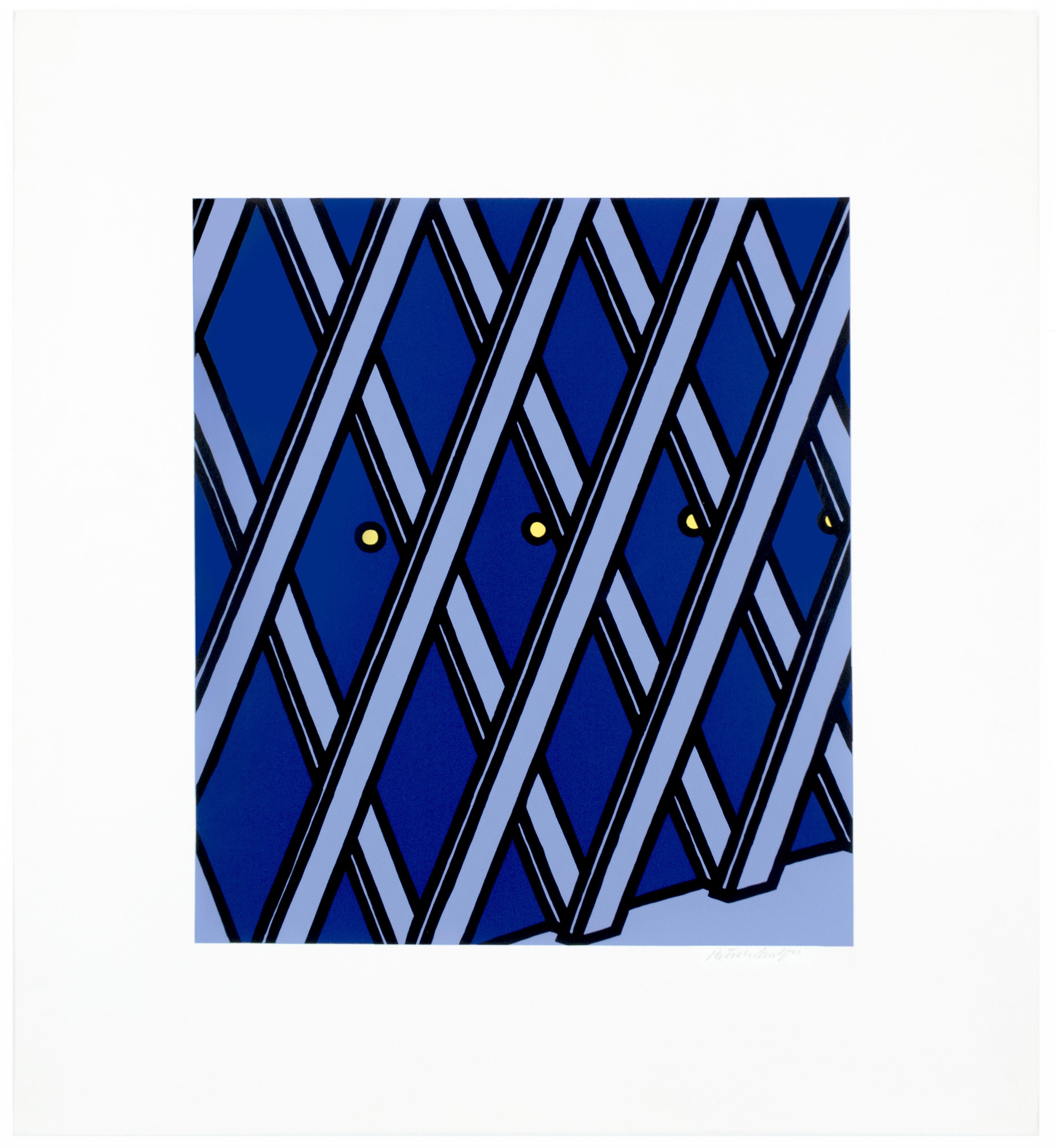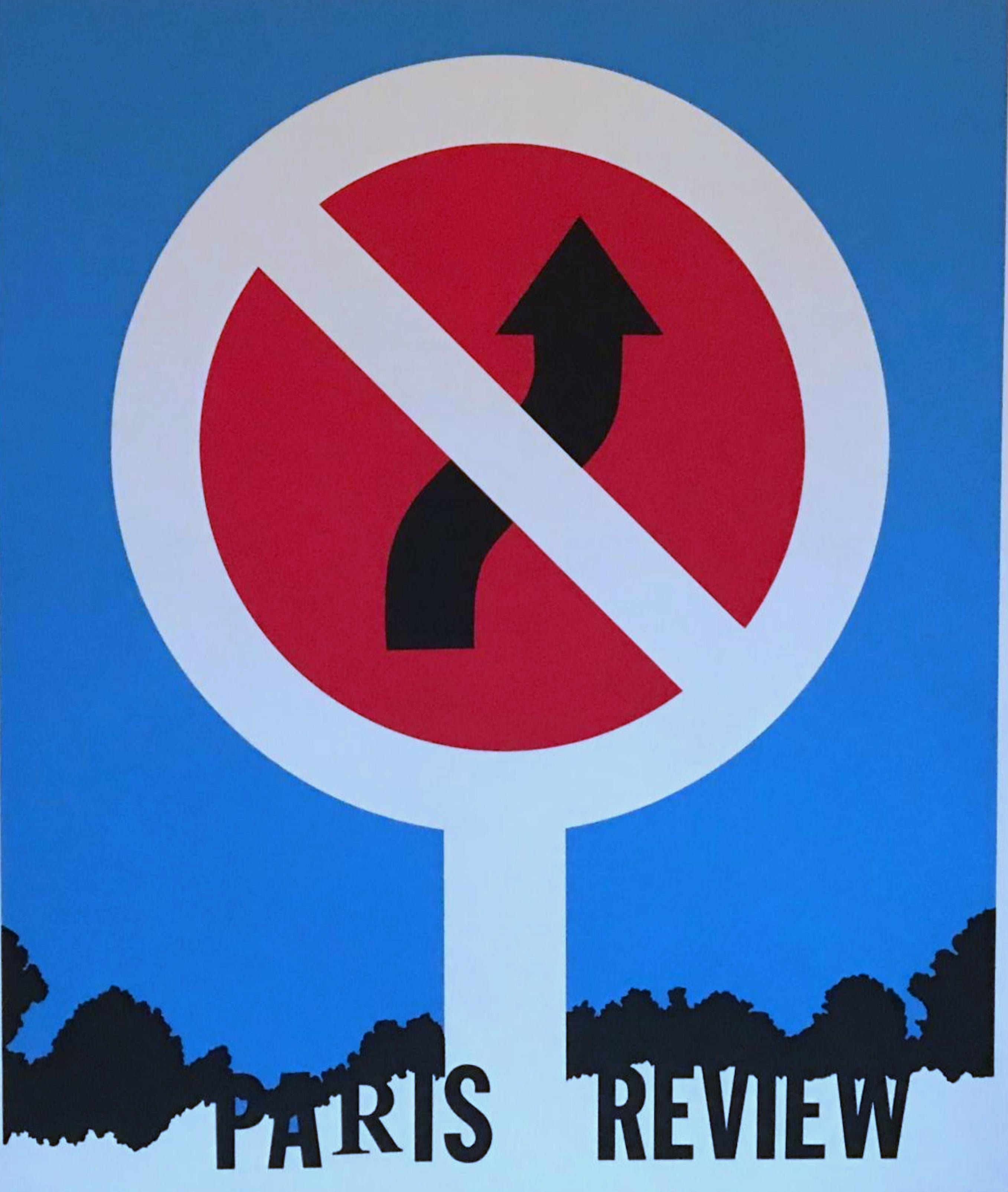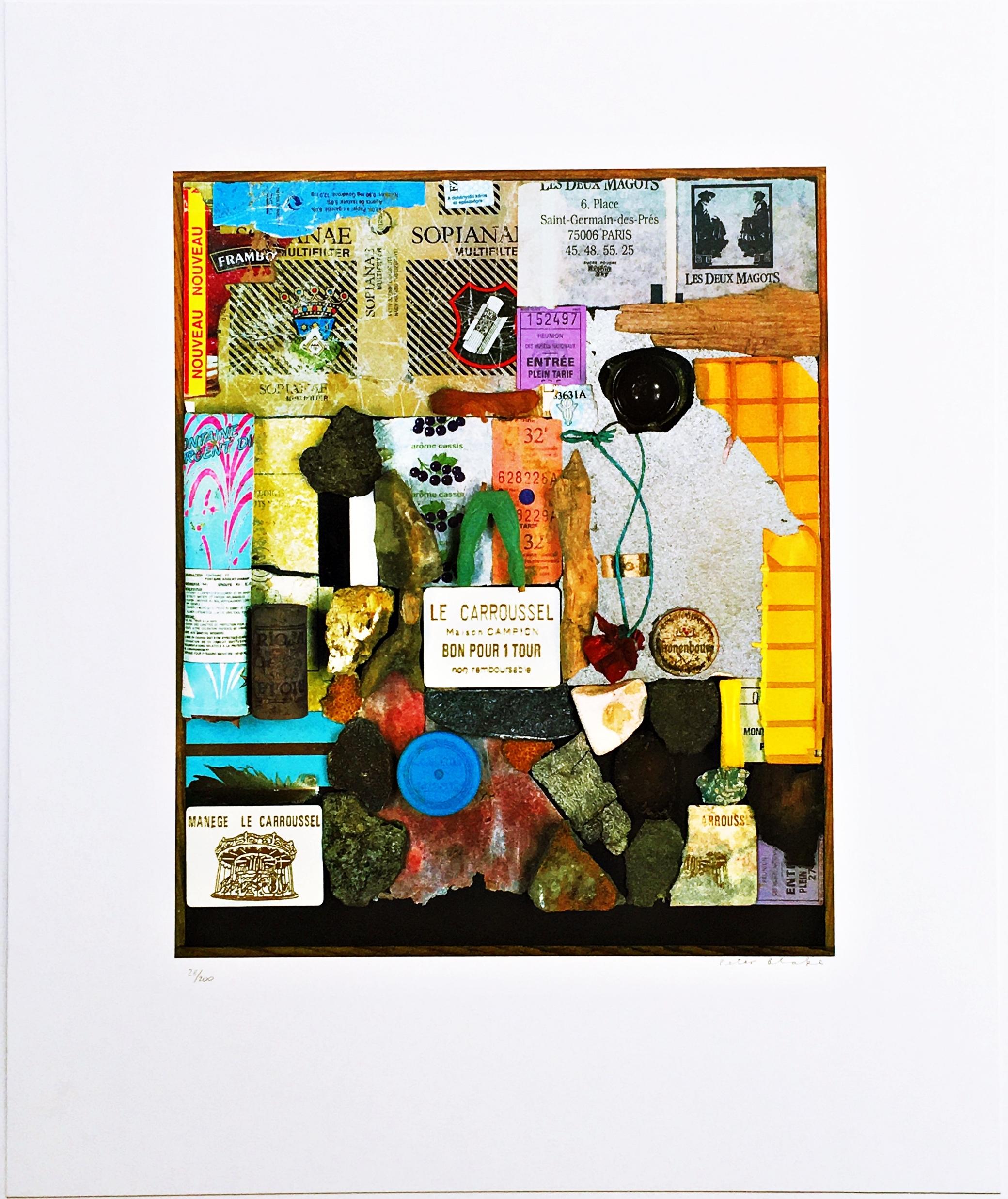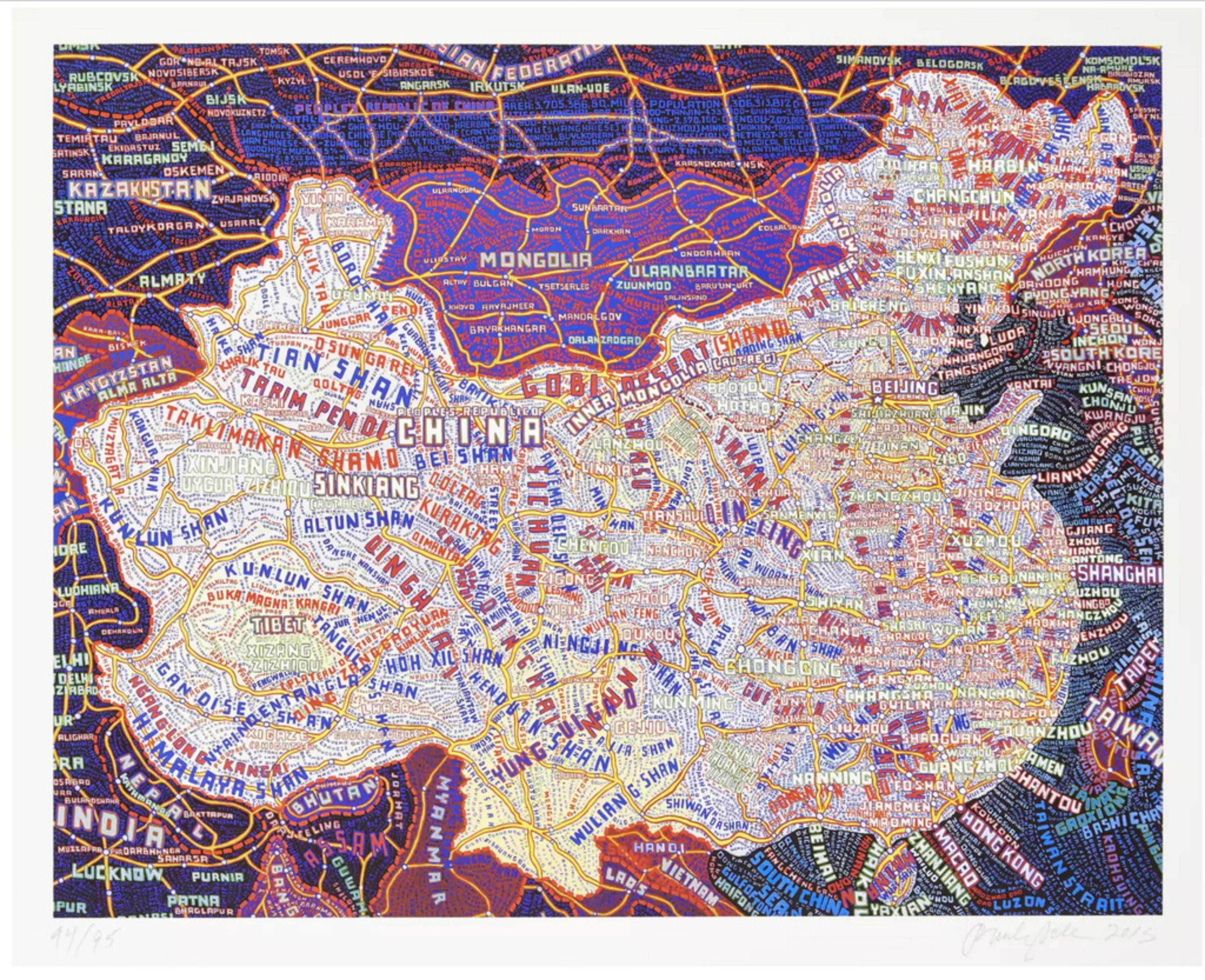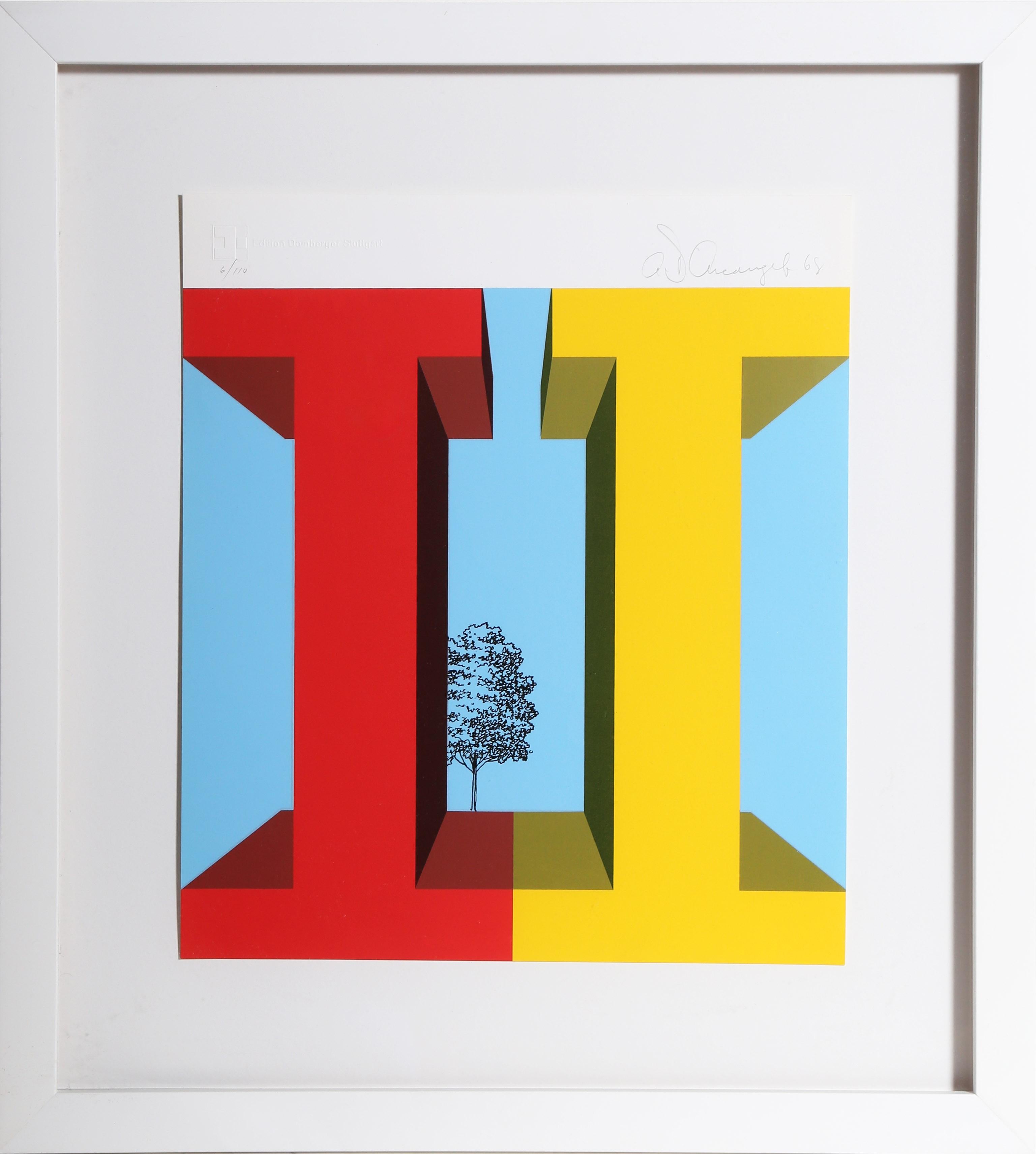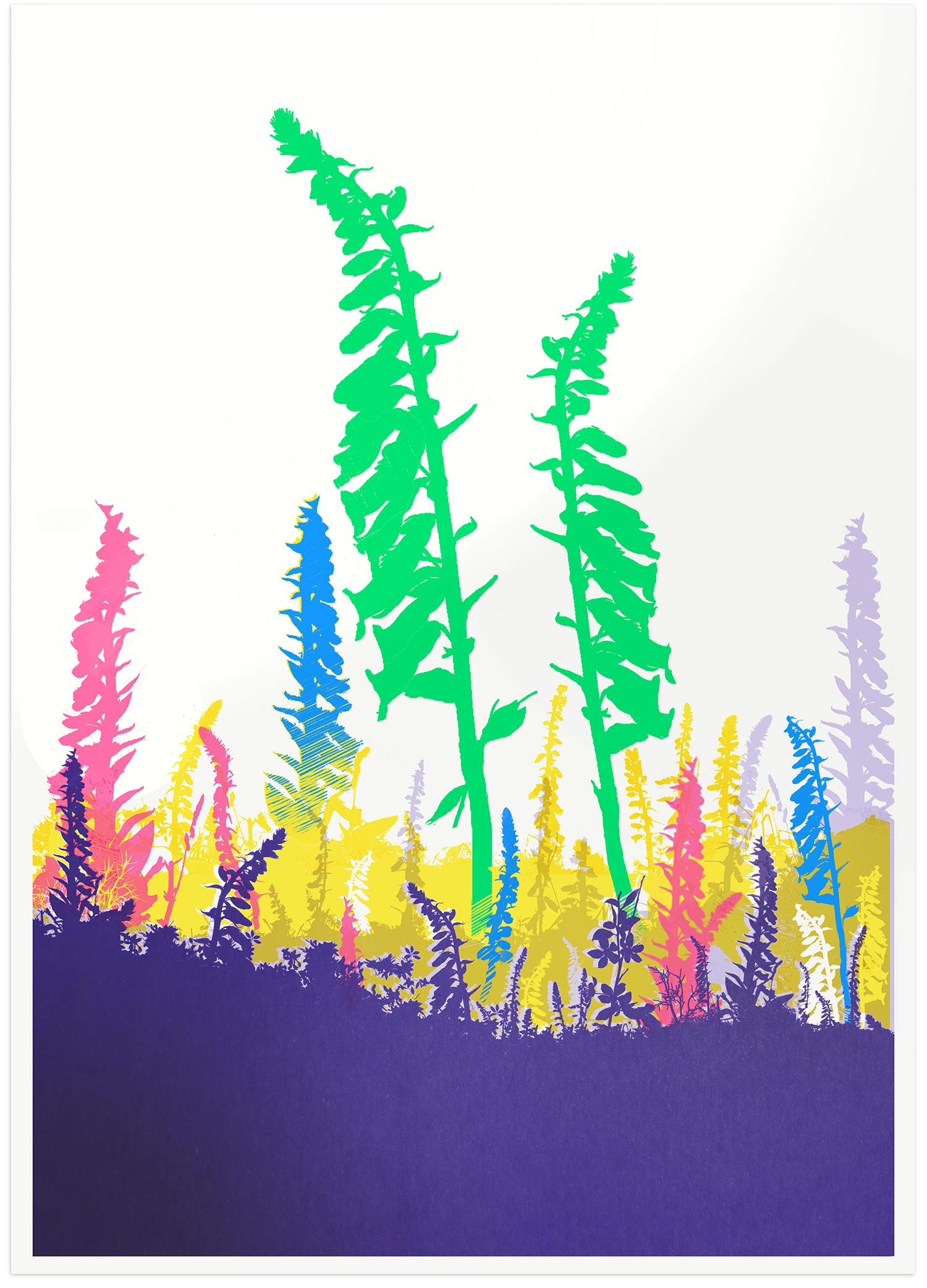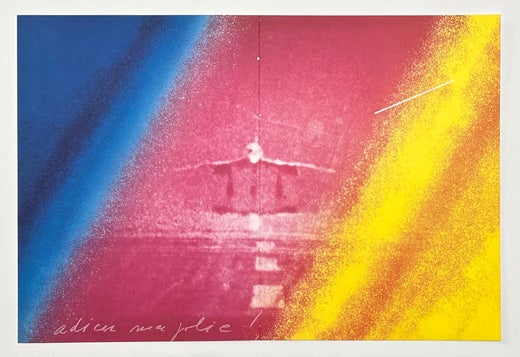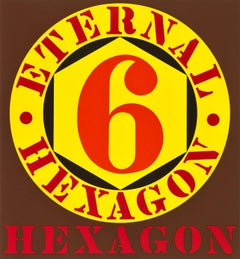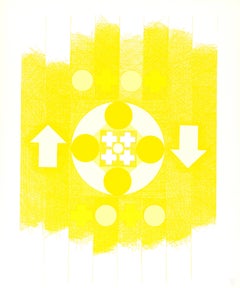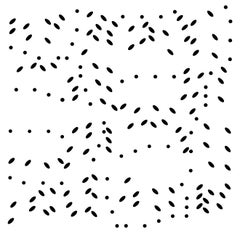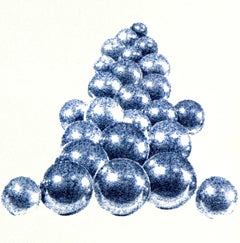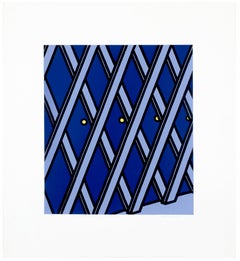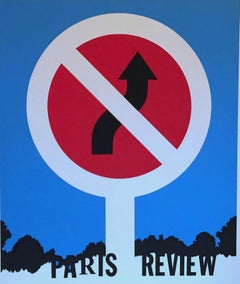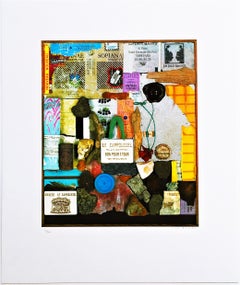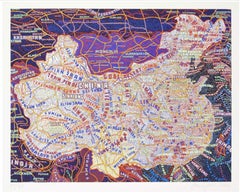Items Similar to Composition, Hommage à Aimé et Marguerite Maeght, Derrière le miroir
Want more images or videos?
Request additional images or videos from the seller
1 of 11
Jacques MonoryComposition, Hommage à Aimé et Marguerite Maeght, Derrière le miroir1982
1982
$716
$89520% Off
£543.68
£679.5920% Off
€621.73
€777.1720% Off
CA$1,000.36
CA$1,250.4420% Off
A$1,112.61
A$1,390.7720% Off
CHF 580.97
CHF 726.2220% Off
MX$13,539.33
MX$16,924.1620% Off
NOK 7,419.91
NOK 9,274.8820% Off
SEK 6,958.56
SEK 8,698.2020% Off
DKK 4,640.24
DKK 5,800.3020% Off
Shipping
Retrieving quote...The 1stDibs Promise:
Authenticity Guarantee,
Money-Back Guarantee,
24-Hour Cancellation
About the Item
Silkscreen on vélin paper. Paper Size: 15 x 22 inches, with centerfold, as issued. Inscription: Unsigned and unnumbered, as issued. Notes: From the folio, Derrière le miroir, N° 250, Hommage à Aimé et Marguerite Maeght, 1982. Published by Galerie Maeght S.A., Paris; printed by l'Imprimerie moderne du Lion, Paris, 1963. Excerpted from the folio (translated from French), This special issue of Derrière le miroir was designed and defined by Aimé Maeght in the fall of 1980. He envisioned its publication as a celebration with which artists and writers published since 1946 were to be associated. He also chose François Chapon, president of the Reverdy Committee, to write the presentation. This Derrière le miroir number 250 took the form, after its disappearance on September 5, 198I, of a tribute to Aimé Maeght and his wife Marguerite Maeght who died four years earlier. XXIV artists agreed to create an original graphic work for this issue which includes the general table of all issues as well as excerpts from texts by XXXII writers. Finished printing on June 2, 1982 on the presses of the l'Imprimerie moderne du Lion in Paris. CL examples were printed on Arches vellum, numbered from I to CL, and some non-commercial examples constituting the original edition. Additional notes: Excerpted from a Christie’s, New York lot essay, The life span of Derrière le Miroir was thirty-five years. Publication began in 1946. Aimé Maeght, initiator of Derrière le Miroir, had already made few attempts to start publications illustrated with fine printed lithographs in colours in the years prior to the launch of Derrière le Miroir. The name, Derrière le Miroir was suggested by Jacques Kober, manager of Galerie Maeght. The gallery had opened in 1945; the first number of Derrière le Miroir was released a year later. For this first issue Geer van Velde was invited to create lithographs to illustrate the publication. The lithographs in the first issue was printed by Mourlot, Paris. The first three issues of Derrière le Miroir were unsuccessful for Maeght as far as the edition size—the initial print-runs were far too large. From 30,000 for the first issue, the number was taken down to 10,000 for numbers two and three, until Derrière le Miroir number four was published in an edition of 1500. Maeght instituted a policy whereby unsold issues were recycled and used for the fabrication of new paper for the coming editions—this served to both conserve resources and also usually result in ultimate edition sizes far less than 1,500. With number four, the permanent format for Derrière le Miroir was established. Lithographs in colours were key; text was limited to comments on the featuring artist's exhibition taking place in the Galerie Maeght, and this catalogue format was defining to Derrière le Miroir. Galerie Maeght took on the leading role in Paris and presented all main artists including Braque, Matisse, Chagall, Léger, Bonnard, Chillida and many more. So too did Derrière le Miroir. The idea of a magazine was meanwhile still on the mind of Aimé Maeght. He found an insert as a solution. Two, and later four, pages of art review were inserted from 1952 onwards. In 1968 this find had ripened to independency and the dream of Aimé Maeght was now a tangible fact named l'Art vivant. Derrière le Miroir was on it's own again. Over 250 issues in a row. At that point publisher Aimé Maeght wished to make a mark with the publication of an hommage to all who once contributed to the magazine which came in the form of issue number 250, but was delayed by the death of Aimé Maeght. It was published after number 253 in 1982 and became a tribute to Aimé and Marguérite Maeght and 35 years of friendship with artists and poets. The era of Derrière le Miroir was closed with that final publication.
JACQUES MONORY (1924-2018) was a French painter and filmmaker whose work, highly influenced by photography and cinema, is an allegory of the contemporary world with a focus on the violence of everyday reality. His canvases evoke a heavy atmosphere, pulling subject matter from modern civilization through the lens of his signature monochrome color blue. Monory was first exhibited at the Drouant-David Gallery in Paris in 1952. During the 1960s, he became one of the leading figures of the European movement of Pop Art, called Narrative Figuration by the art critic Gérald Gassiot-Talabot. Monory would say: “What has developed in France has moved away from American Pop Art, we have expressed a critical narrative of society while the Americans have almost always, in my opinion, embraced their system. This is a fundamental difference.”
In 1968, he directed the influential film Ex- and painted the series Les Meurtres (Murders), putting in place the elements that would characterize his work: the division into sequences, the distancing by the use of the blue color, the dream, the illusion, but also a critical look at society. In 1971, Pierre Gaudibert curated a solo exhibition, Monory Catalogue 1968- 1971 at the Modern Art Museum of Paris which heightened his visibility, making him instantly recognizable. Two trips to the United States in 1969 and 1973 were vitally important to his personal and artistic history; it constitutes, from photos, a repertory of forms, images, and notebooks of models. In 1974, he joined the legendary gallery of Aimé Maeght, where he would exhibit, including his Operas Glacés (Frozen Operas). In 1986, he exhibited at the 42nd Venice Biennale, and in 1992, he was the featured artist of the French Pavilion at the World Expo in Seville. In 2005, his work inaugurated the MACVAL in France with Detour, a large spiral installation of his paintings. In 2008, Monory was highlighted in the retrospective exhibition Figuration Narrative, at the Grand Palais in Paris. In 2015, a solo retrospective, Jacques Monory, took place at the Helene & Edouard Leclerc Fund for Culture in Landerneau, France. His work is included in the permanent collections of Pompidou Center, Paris, France; The Museum of Modern Art, Paris, France; Museum of Modern Art and Contemporary Art, Geneva, Switzerland; Museum of Modern Art, Fukoka, Japan; the Maeght Foundation, Saint-Paul de Vence, France; National Museum of Fine Arts, Havana Cuba; the Leeum, Samsung Museum of Art, Seoul, South Korea; the Ludwig Museum, Cologne, Germany; the Museum of Solidarity Salvador Allende, Santiago, Chile; the Stedelijk Museum, Amsterdam, Holland; and the Museum Colecção Berardo, Lisbon, Portugal. In 2013, Jacques Monory‘s artwork, 14 Juillet Prive, sold for $166,926 USD at Versailles Enchères Perrin-Royère-Lajeunesse, setting a world record for the artist.
- Creator:Jacques Monory (1934, French)
- Creation Year:1982
- Dimensions:Height: 15 in (38.1 cm)Width: 22 in (55.88 cm)
- Medium:
- Movement & Style:
- Period:
- Condition:
- Gallery Location:Auburn Hills, MI
- Reference Number:1stDibs: LU1465216701692
Jacques Monory
French artist Jacques Monory, one of the leaders of the narrative figuration movement. Having trained at the École des Arts Appliqués in Paris, Jacques Monory quickly developed a passion for photography, which he integrated into his art, namely with his famous monochrome blue backgrounds.
About the Seller
4.9
Platinum Seller
Premium sellers with a 4.7+ rating and 24-hour response times
Established in 1978
1stDibs seller since 2021
1,155 sales on 1stDibs
Typical response time: <1 hour
- ShippingRetrieving quote...Shipping from: Auburn Hills, MI
- Return Policy
Authenticity Guarantee
In the unlikely event there’s an issue with an item’s authenticity, contact us within 1 year for a full refund. DetailsMoney-Back Guarantee
If your item is not as described, is damaged in transit, or does not arrive, contact us within 7 days for a full refund. Details24-Hour Cancellation
You have a 24-hour grace period in which to reconsider your purchase, with no questions asked.Vetted Professional Sellers
Our world-class sellers must adhere to strict standards for service and quality, maintaining the integrity of our listings.Price-Match Guarantee
If you find that a seller listed the same item for a lower price elsewhere, we’ll match it.Trusted Global Delivery
Our best-in-class carrier network provides specialized shipping options worldwide, including custom delivery.More From This Seller
View AllEternal Hexagon (Sheehan 33), X + X, Ten Works by Ten Painters, Robert Indiana
By Robert Indiana
Located in Auburn Hills, MI
Silkscreen on Mohawk Superfine Bristol paper. Inscription: unsigned and unnumbered, as issued. Good condition. Notes: From the folio, X + X, Ten Works by Ten Painters, 1964. Publishe...
Category
1960s Pop Art Landscape Prints
Materials
Screen
$1,996 Sale Price
20% Off
Free Shipping
Composition, X + X, Ten Works by Ten Painters, George Earl Ortman
By George Earl Ortman
Located in Auburn Hills, MI
Silkscreen on Mohawk Superfine Bristol paper. Inscription: unsigned and unnumbered, as issued. Good condition. Notes: From the folio, X + X, Ten Works by Ten Painters, 1964. Publishe...
Category
1960s Pop Art Landscape Prints
Materials
Screen
$1,996 Sale Price
20% Off
Free Shipping
Composition, X + X, Ten Works by Ten Painters, Larry Poons
By Larry Poons
Located in Auburn Hills, MI
Silkscreen on Mohawk Superfine Bristol paper. Inscription: unsigned and unnumbered, as issued. Good condition. Notes: From the folio, X + X, Ten Works by Ten Painters, 1964. Publishe...
Category
1960s Pop Art Landscape Prints
Materials
Screen
$1,996 Sale Price
20% Off
Free Shipping
Bury, Cinétisation, Derrière le miroir (after)
By Pol Bury
Located in Auburn Hills, MI
Lithograph and cinétisation on vélin paper. Inscription: Unsigned and unnumbered, as issued. Good condition. Notes: From Derrière le miroir, N° 191, 1971. Published by Aimé Maeght, É...
Category
1970s Pop Art Landscape Prints
Materials
Lithograph
Bury, Cinétisation, Derrière le miroir (after)
By Pol Bury
Located in Auburn Hills, MI
Lithograph and cinétisation on vélin paper. Inscription: Unsigned and unnumbered, as issued. Good condition, with centerfold, as issued. Notes: From Derrière le miroir, N° 191, 1971....
Category
1970s Pop Art Landscape Prints
Materials
Lithograph
Bury, Cinétisation, Derrière le miroir (after)
By Pol Bury
Located in Auburn Hills, MI
Lithograph and cinétisation on vélin paper. Inscription: Unsigned and unnumbered, as issued. Good condition, with centerfold, as issued. Notes: From Derrière le miroir, N° 191, 1971....
Category
1970s Pop Art Landscape Prints
Materials
Lithograph
You May Also Like
I'll take my life monotonous from "Some Poems of Jules Laforgue" graphic pop art
By Patrick Caulfield
Located in New York, NY
Printed in glossy purple, lavender, and bright yellow, I'll take my life monotonous by Patrick Caulfield depicts a lattice outlined in black, with three small dots of yellow. A garden lattice...
Category
Late 20th Century Pop Art Landscape Prints
Materials
Screen
Paris Review (Lt. Ed. S/N) 1960s print by renowned Pop Artist abstract landscape
Located in New York, NY
Allan D'Arcangelo
Paris Review, 1964-5
Silkscreen
32 × 26 inches
Signed and numbered from the limited Edition of 150
pencil signed, numbered and dated on the front
Unframed
Published by the Paris Review, Printed by Steven Poleskie at Chiron Press, New York
Allan D'Arcangelo created this work in 1964 as a benefit print for the eponymous Paris Review magazine which invited some of the most famous artists of the era to contribute. Over the next decade, D'Arcangelo would continue to receive significant recognition in the art world - exhibiting at Fischbach and then Marlborough Galleries in Manhattan. He was well known for his paintings of the iconic American highway, along with his depictions of desolate, industrial landscapes. In her essay "Ghost on the Highway: Allan D'arcangelo's Haunting Americana", Alice Bucknell writes, "A born-and-bred New Yorker, D’Arcangelo spent his due time trawling through the Bible Belt of the Deep South and the dizzying expanse of the Southwest desert as well as the more expected outposts of New York and L.A. Taking a particular favor to the way acrylic interacts with light — how it avoids the glistening sheen of oil, and how the flatness of the medium masks the presence of the artist’s hand — D’Arcangelo teases out complex ideas of the highway’s reality and representation, its rampant commercialization and maddening isolation, as well as escapism and entrapment as two split personalities of American infrastructure space through his signature flattening one-point perspective. “My most profound experiences of landscape were looking through the windshield,” D’Arcangelo explained to Marco Livingstone in the spring of 1988 while the two drove from New York City to the artist’s studio in upstate New York: an idiosyncratic interview included in the exhibition catalogue. “The sky, the tree line and the pavement all have the same quality, and it has to do with our separation from the natural world.” Far from the sugar...
Category
1960s Pop Art Abstract Prints
Materials
Pencil, Screen
A Walk in the Tuileries Gardens Paris print with silver leaf and glazes Signed/N
By Peter Blake
Located in New York, NY
Peter Blake
A Walk in the Tuileries Gardens, 2004
26 colour Screenprint with Silver leaf and 3 Glazes
Hand signed and numbered 28/200 by artist on lower front
30 1/5 × 22 1/2 inches
The work is matted on board and unframed as it had been removed from its original frame.
Measurements:
Board:
30 1/8 x 22 1/2 inches
Sheet:
24 x 20 inches
Unframed
A Walk Through the Tuileries Gardens is based on a memory of a stroll in Paris distilled through the ephemera he found along the way. ' The legendary Peter Blake, the father of British Pop Art, is renowned for his love of gathering and collecting the ephemera of life, of memories, of dreams and whimsies, sometimes mingled with those of other historical fantasists. Possessions he regards as symbolic of his relationships with his world, carefully questioning the personal significance of each object in this respect. The scraps of tickets, fragments of plastic, driftwood, pebbles and sycamore leaf in A Walk Through the Tuileries gardens are evocative and ephemeral souvenirs, gathered at the time and collated later perhaps with a whiff of romance. His image takes us, in turn, on a stroll down the wide gravel, under the autumnal trees, a lingering taste of saucisson and red wine on our palate and with a sudden impulse to take a turn on the Caroussel. This whimsical Peter Blake print would make a great gift for any Blake fan.
Legendary British Pop Art pioneer British Blake was born in 1932, and after his formal training at the Gravesend School of Art, then at the Royal Academy of Art, he broke away from tradition, producing work from 1960 on that would come to define the British Pop Art Movement. He came to be known as the Grandfather of Pop Art, and his art achieved iconic status with his sleeve for The Beatles’ Sgt Pepper’s Lonely Hearts Club Band.
Blake’s art draws on imagery from the popular culture of the past and present, as well as from the canon of fine art, thus creating an alternative, more democratic visual aesthetic. He freely mixes the ‘high’ with the ‘low’, ultimately inviting us to see beyond such distinctions. Always playful, and at times irreverent, he sets up the most unlikely juxtapositions across time and space, creating conversations and ‘parties’ to which all are invited. An abiding theme is an investigation, and celebration, of England and Englishness.
Collage has always been a hallmark of Blake’s work, allowing him to freely mix found objects and images of people and other artworks; screenprinting, with its use of stencils and layers, lends itself perfectly to this technique, and indeed it was Pop Art that fully realised the potential of screenprinting as a medium for complex replication.
More about Peter Blake:
Sir Peter Thomas Blake...
Category
Early 2000s Pop Art Abstract Prints
Materials
Silver
China, gorgeous signed/n silkscreen on lanaquarelle from celebrated map series)
By Paula Scher
Located in New York, NY
Paula Scher
China, 2013
Hand pulled silkscreen on deluxe Lanaquarelle paper
24 3/5 × 28 1/5 inches
Edition of 95: Pencil signed and numbered on the front
Unframed
Accompanied by gall...
Category
2010s Pop Art Abstract Prints
Materials
Graphite, Screen
June, Pop Art Print by D'arcangelo 1969
By Allan D'Arcangelo 1
Located in Long Island City, NY
Artist: Allan D'Arcangelo, American (1930 - 1998)
Title: June
Year: 1969
Medium: Silkscreen, signed and numbered in pencil
Edition: 6/100
Size: 14 x 12 in. (35.56 x 30.48 cm)
Frame: ...
Category
1960s Pop Art Abstract Prints
Materials
Screen
Foxglove, limited edition print, floral art, colourful, affordable art
By Chris Keegan
Located in Deddington, GB
Foxglove by Chris Keegan [2022]
limited_edition
Screen print
Edition number 45
Image size: H:42 cm x W:30 cm
Complete Size of Unframed Work: H:42 cm x W:30 cm x D:0.1cm
Sold Unframe...
Category
2010s Pop Art Abstract Prints
Materials
Paper, Screen
